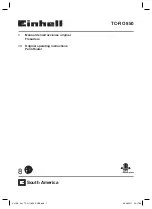
Network trace configuration
55
Network trace configuration
Overview
Network administrators can perform network traces to capture and analyze network traffic.
Network trace operates in two modes:
•
Packet file trace mode
: Captured packets are stored in a file on the HP 501. The
HP 501 can transfer the file to a local PC or network location using HTTP or to a TFTP
server. The file is formatted in pcap format and can be examined using tools such as
Wireshark and OmniPeek.
•
Remote packet trace mode
: The captured packets are redirected in real time to an
external PC running the Wireshark tool.
The HP 501can trace the following types of packets:
•
802.11 packets received and transmitted on radio interfaces. Packets captured on radio
interfaces include the 802.11 header.
•
802.3 packets received and transmitted on the Ethernet interface.
To configure network trace settings and initiate packet captures, select
Tools
>
Network
trace
.
Packet trace configuration
Use this section to configure parameters that affect how packet trace functions on the radio
interface.
Trace beacons
Enable to trace the 802.11 beacons detected by the radio. HP recommends that you also
enable Promiscuous trace when performing a beacon trace.
Promiscuous trace
Enable to place the radio in promiscuous mode when the trace is active.
In promiscuous mode, the radio receives all traffic on the channel, including traffic that is not
destined to the HP 501. Packets not destined to the HP 501 are not forwarded.
As soon as the trace is completed, the radio reverts to non-promiscuous mode operation.
Client filter enable
Enable to use the WLAN client filter to trace only frames that are transmitted to, or received
from, a WLAN client with a specified MAC address.
Summary of Contents for Pavilion 501
Page 19: ...Setting the system time 19 ...










































